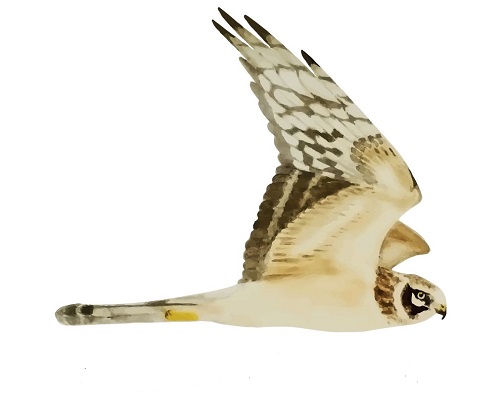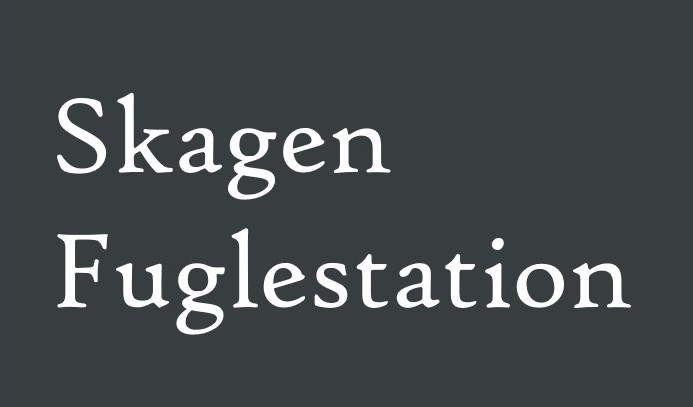Her på Skagen Fuglestations blog bringes korte nyheder i dagbogsformat om hændelser på fuglestationen.
Is it summer again?
We were able to ask ourselves this question several times today. Admittedly, the end of September is neither late autumn nor winter, but we didn't expect some of the bird species we saw today. The whole fun started early this morning, as usual, at Kabeltromlen (or how it is sometimes called if you translate it: Cable Drums or Kabeltromellen haha). Already in the first round we noticed that there were many songbirds in the area. We had strong support all morning from the three Germans who were camping at the campsite and Gustav also came to visit us with his parents.
Also thanks to the many tits (mejse) we were able to ring almost 100 birds today. Among them was a Sedge Warbler (Sivsanger), two Reed Warblers (Rørsanger) and one Garden Warbler (Havesanger). Wow. As long distance migrants, which fly to Africa they should have left now. On the other hand, it was really warm and sunny today, which made it hardly feel like autumn. At World's End 1, a Red-backed Shrike (Rødrygget Tornskade ) was busy hunting for flying insects. It too should hurry up to arrive at its wintering grounds in time.
But the absolute highlights should not remain unmentioned:
We were able to ring a Whinchat (Bynkefugl), which is apparently not so unusual for the area, but for all of us it was the first one ever in our hands. We were very pleased with that.
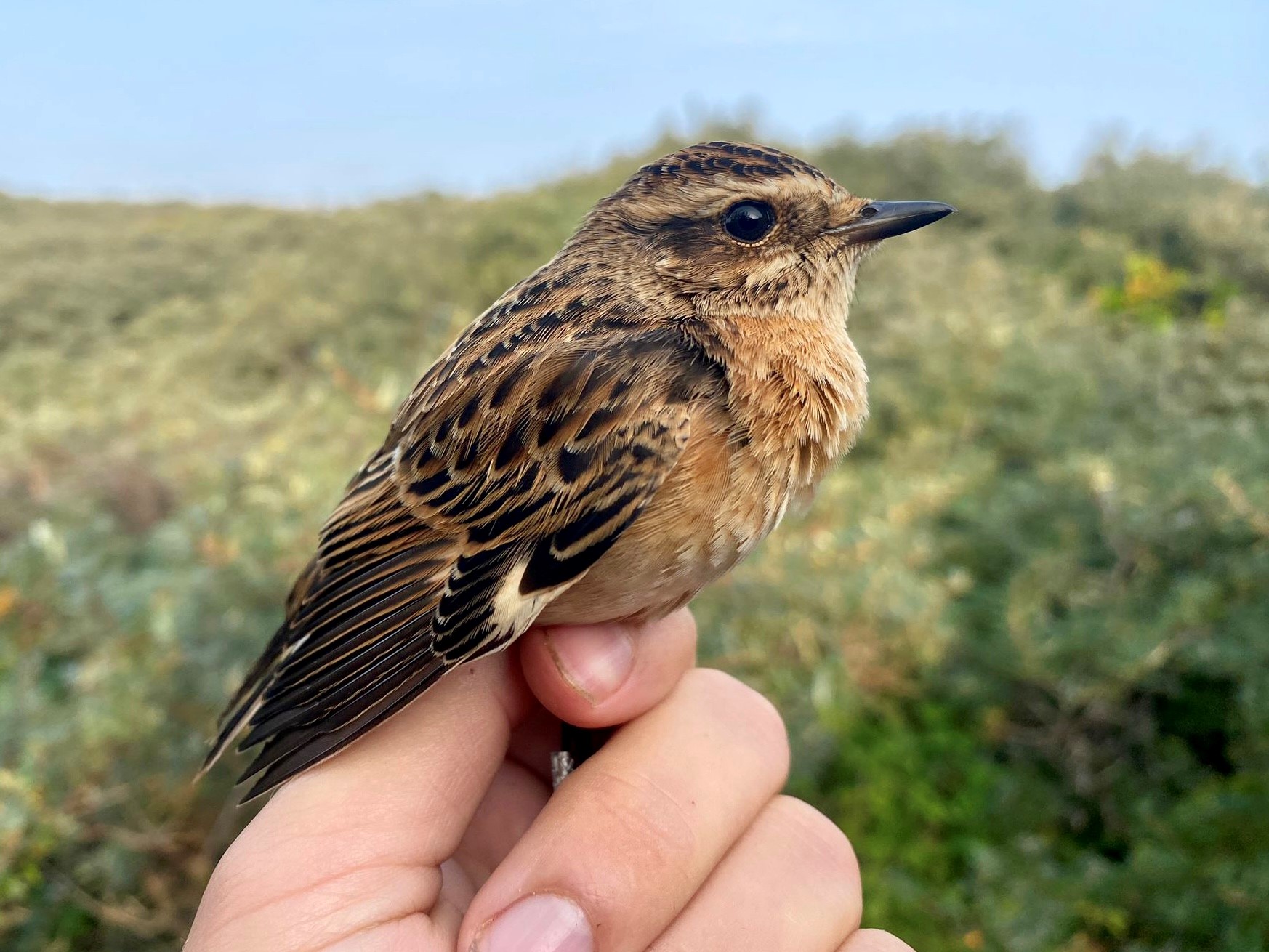 what a nice surprise - Whinchat (Bynkefugl)
what a nice surprise - Whinchat (Bynkefugl)
Then we were able to catch a male Blackcap (Munk) which already had a ring from Belgium (Brussels). That is really impressive and catches of birds ringed elsewhere are just the best you can have in ringing.
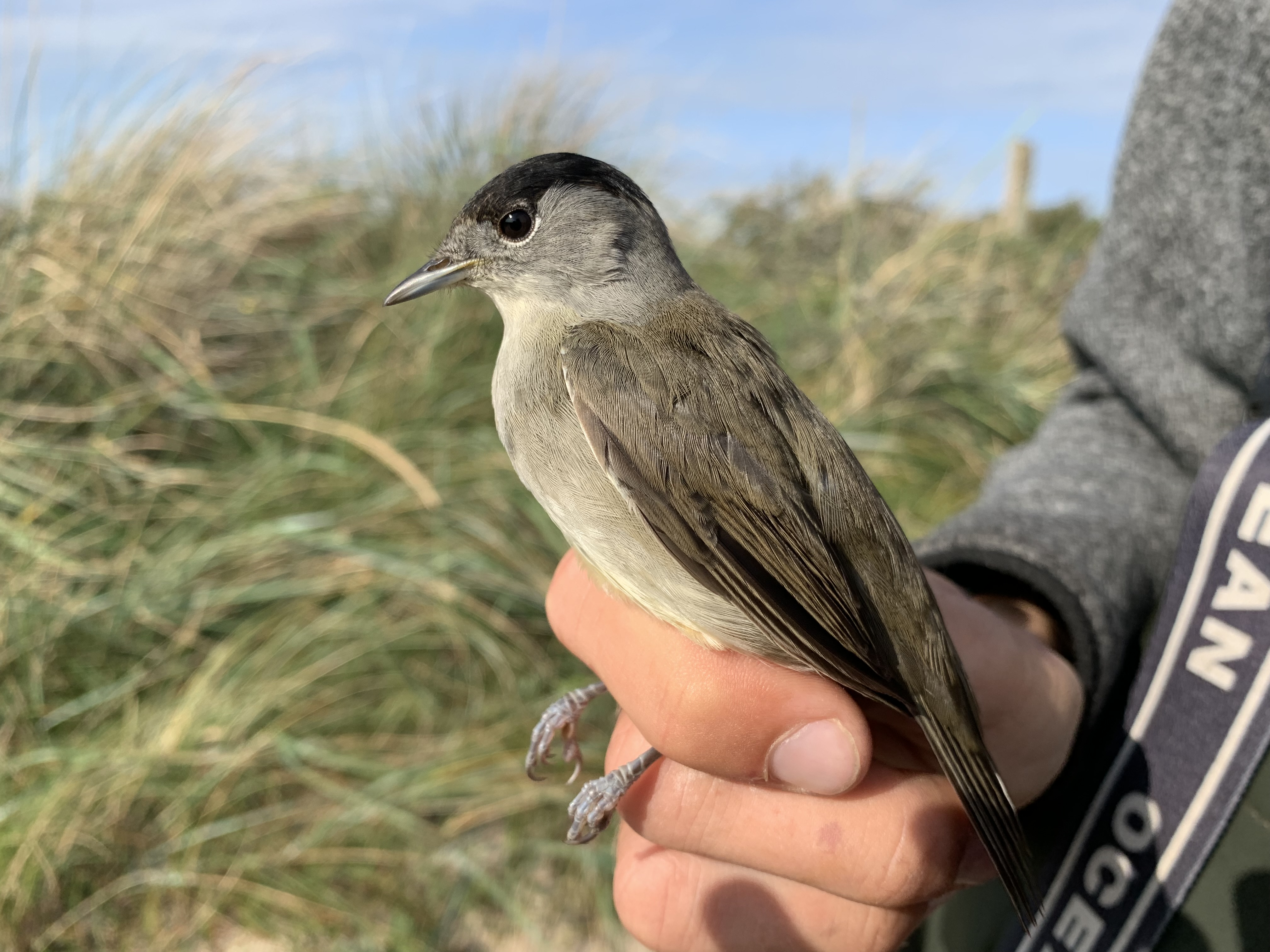 Blackcap (Munk) out of Belgium
Blackcap (Munk) out of Belgium
However, we also had birds that clearly showed that summer is definitely over. Two Lapland Buntings (Lapværling) flew over calling and left their beautiful calls on the memory card in the recorder I had placed especially for birds like this. Do you want to hear the recording? Than click here!!
With the help of the sound recording I was also able to identify a flock of 6 Crossbills flying overhead as Parrot Crossbills (Stor Korsnæb). Really cool. Other highlights include Woodlark (Hedelærke) and a late Tree Pipit (Skovpiber).
Meanwhile, our hard-working counters at World's End 3 enjoyed the beautiful sunrise. Even though there was little activity at first, various Wader species (Ryle) could be nicely observed and studied. Then some Razorbills (Alk) and Fulmars (Mallemuk) passed through. The nice weather not only made for a good time at the beach, but also at World's End for good bird migration of passerines, so birds like Linnets (Tornirisk) passed through here as well.
After a lunch break we went for a walk together through the reserve and enjoyed the birds and the beautiful weather. Afterwards we started preparing dinner, as there will be eight of us tonight. But I am sure it will be delicious!
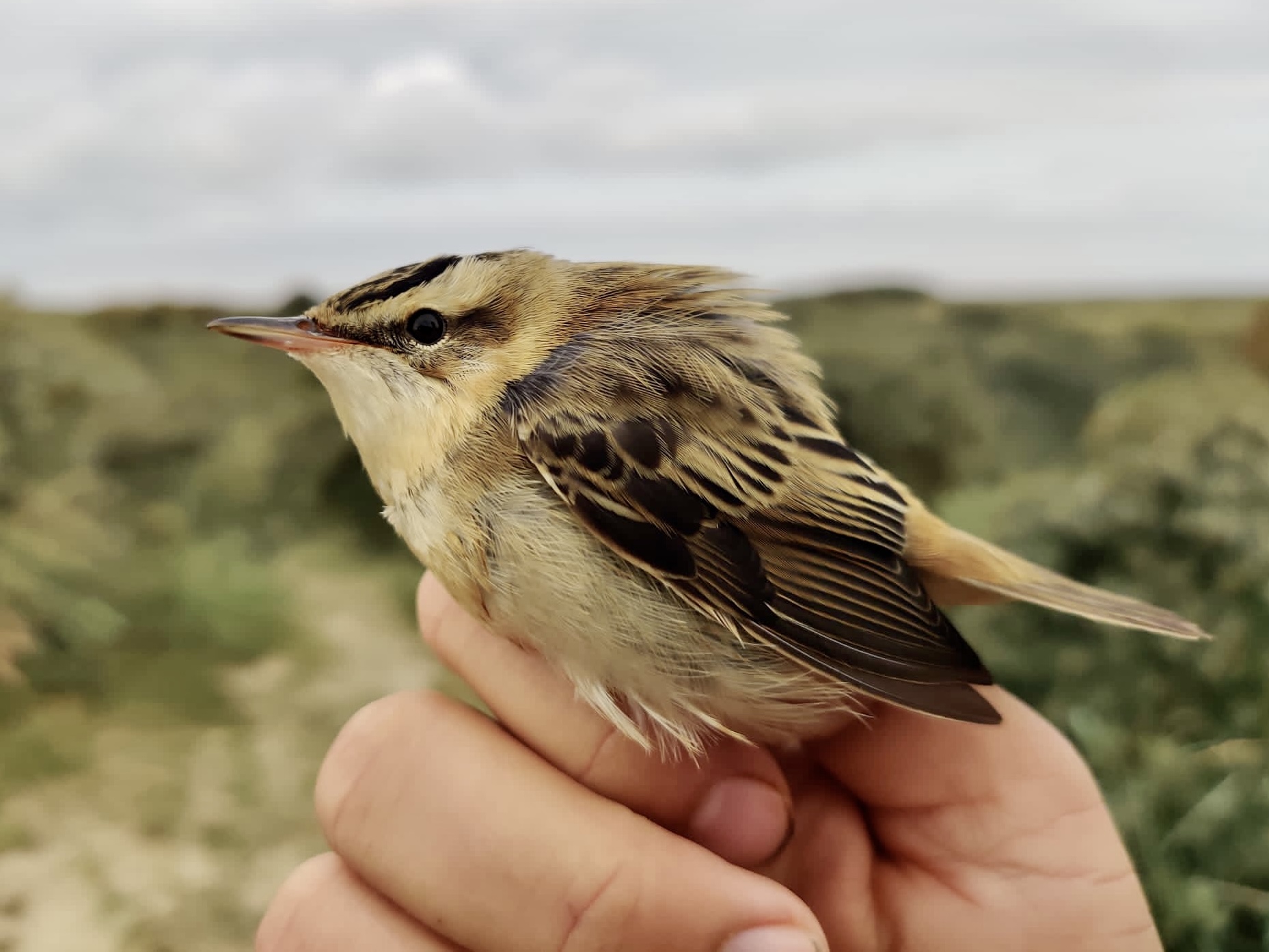 late Sedge Warbler (Sivsanger)
late Sedge Warbler (Sivsanger)
Ringing (Kabeltromlekrattet):
Total: 99
People: Antonia Greil, Hayley Land, Rebecca Cheape, Simon Kiesé, Simon S. Christiansen, Hans Christophersen, Knud Pedersen, Lina Kotschi, Dorothea Engert, Joel Münch.
A link to today's observations from volunteers and local observers.
